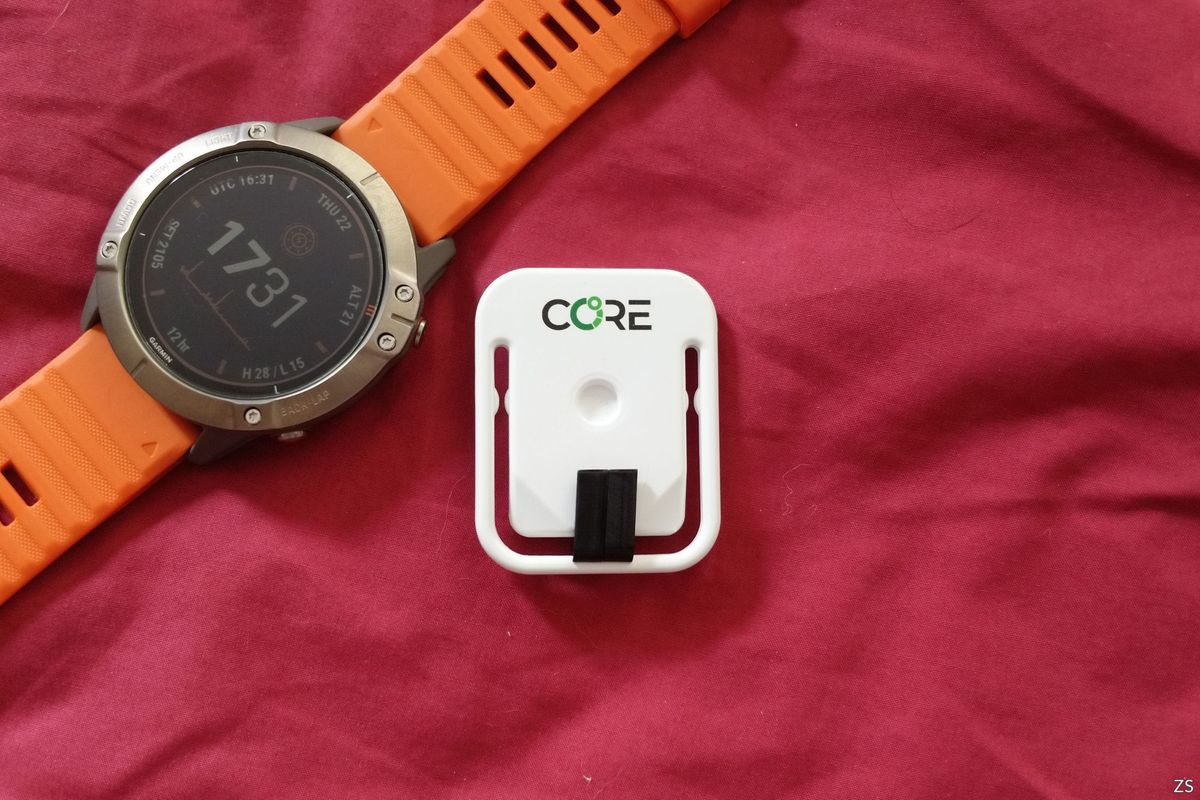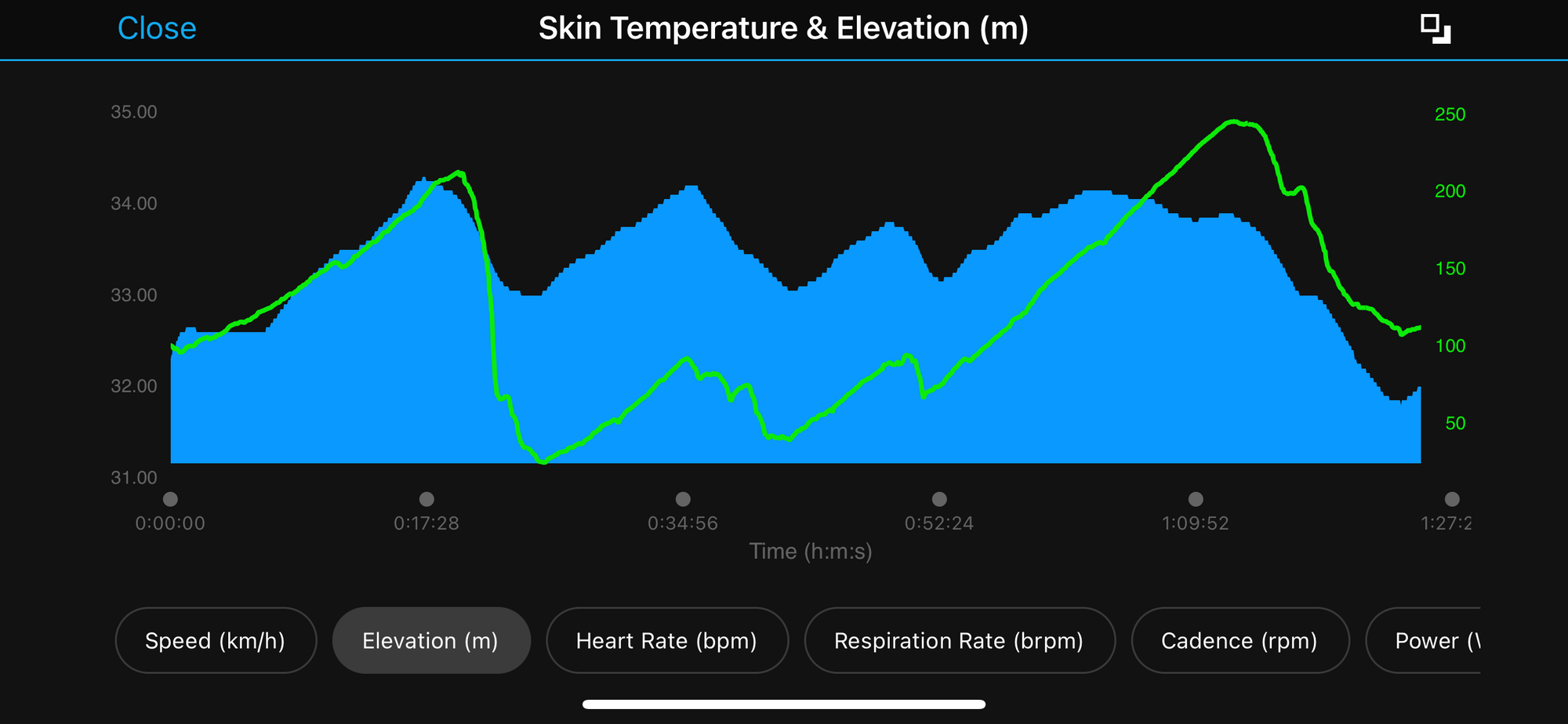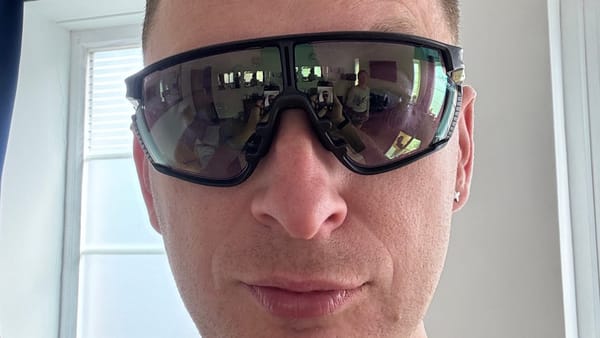CORE body temperature
Why bother tracking your core and skin temperature?

A recent addition to my array of data collection tools is the CORE body temperature monitor.
TL;DR?
A wearable skin and core body temperature monitor, that can record data for about a week constantly, and 'just works'.
What is it?
A wee sensor that can be stuck to your skin with a pad, or attached to a heart rate strap (chest or arm) that tracks your skin temperature (directly) and your core temperature (by inference).
With a battery life of about a week, it can be used to track your body temperature whilst ill, while getting a COVID vaccination, while exercising, or any other occasion one might be curious about body temperature.
Why would one want to track body temperature?
Curiosity? A better understanding of the internal systems at work that deliver performance? Oh and because I can, which is probably the most honest reason.
How have I used the sensor?
Exercise
I've tracked a lot of exercise with it: swimming, cycling, and running.
Potential illness/vaccine side effects
When getting both doses of Moderna, I wore the sensor, attached via a sticky, to my chest to see if there was a change in temperature. Nothing after the first dose, but an increase by 1°C after the second dose (also picked up by my Oura ring).
What have I learned from these data?
Windchill happens fast
On a hot day, cycling up to the top of a hill with a steep descent: overlaying altitude and skin temperature shows a correlation that's almost instant. Over the descent, very little change to core temperature (it's a short, fast drop) but seeing the evaporative cooling effect is fascinating.

Temperature is an interesting metric for workout intensity
My 'resting' temperature is about 36.6°C, increasing to about 38.6°C with a challenging piece. What's interesting here is defining challenging: it could be a base run on a hot day, where the run itself isn't the challenge, but the environment is, or a shorter interval piece on a cooler day.
I've observed that the higher my temperature during a workout, the longer the recovery time is, and the harder the perceived effort. I'd love to see the Firstbeat recovery metric take temperature into account, if it doesn't already.
Getting into a pool on a hot day
Hot here means about 38°C, and the open-air pool is about 22°C. After a gentle cycle to the pool, my skin had warmed up nicely, but that was cooled off, as one might expect, but getting into the pool. What's interesting is that after the initial drop, the skin temperature gets back to where it was as the core temperature increases from the swim.
How have these extra data improved my performance?
Temperature as a metric for workout intensity is useful to track, and helps answer the (sometimes obvious) question of 'why did that run feel so much harder?'
Now the weather is cooler, using the same temperature data to keep an eye on my core temperature when going straight from the pool to a bike (T1).
Would I improve anything with the CORE sensor?
It's always on, regardless of whether or not I'm wearing it. An auto-off algorithm would save me time charging it.Nope, they fixed that!Low-battery alert/battery status via the ConnectIQ data field.They fixed that too, by indicating the battery status with a sequence of LED blinks.Allow the ConnectIQ data field to download data stored in the sensor, much like an HRM after a swim (currently the only way to see data not streamed live to the watch is by directly synchronising the sensor with their app, and then reviewing either via their app or their website).Christopher from CBT emailed to explain why this isn't immediately possible.- Better Wahoo integration. It's not CORE's fault, this one, but having to get the data in by pretending it's a muscle oxygen sensor annoys me (even if only because I still like to use my Humon Hex).
Where do I get one?
Direct from CORE: https://corebodytemp.com/


